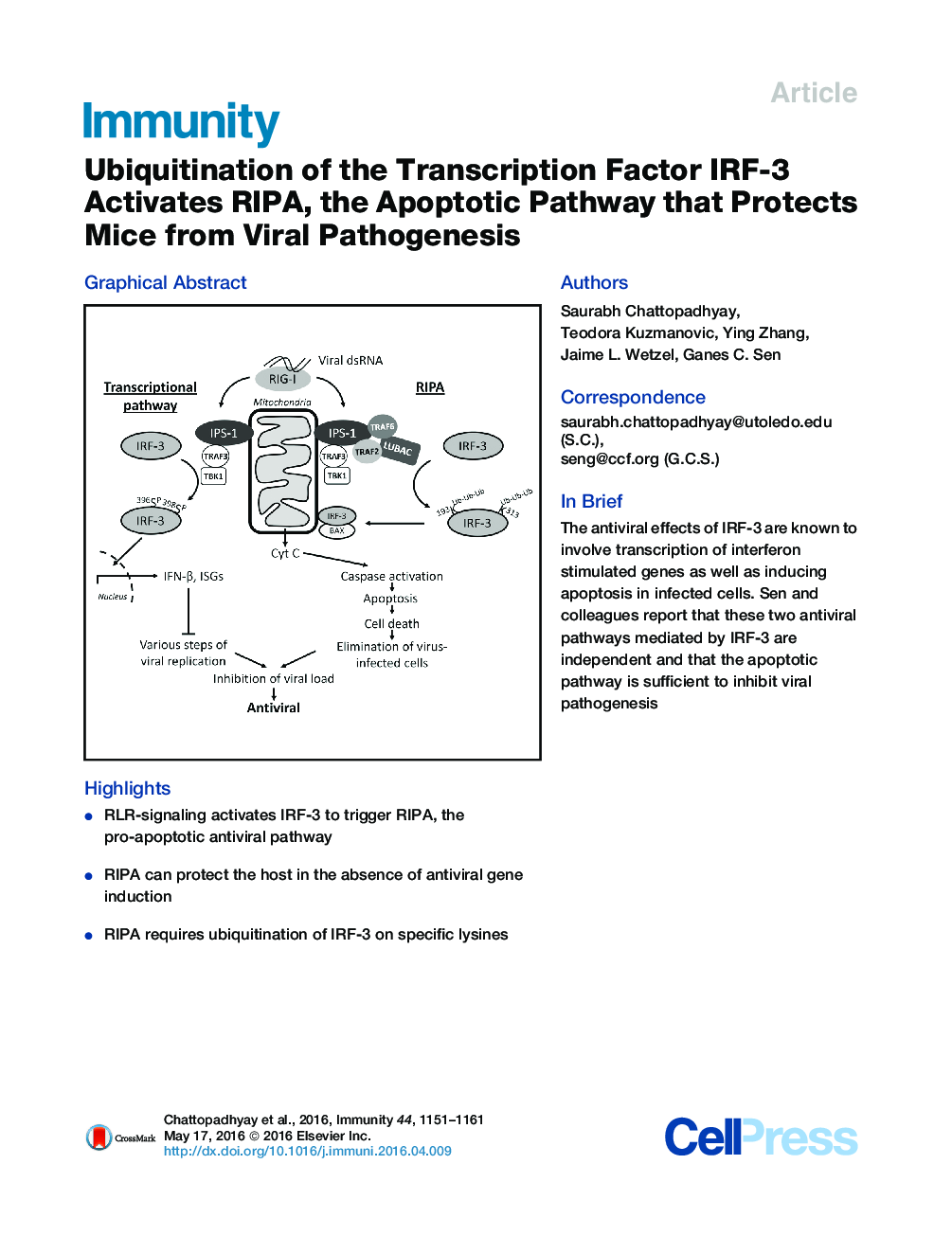| Article ID | Journal | Published Year | Pages | File Type |
|---|---|---|---|---|
| 3352883 | Immunity | 2016 | 11 Pages |
•RLR-signaling activates IRF-3 to trigger RIPA, the pro-apoptotic antiviral pathway•RIPA can protect the host in the absence of antiviral gene induction•RIPA requires ubiquitination of IRF-3 on specific lysines
SummaryThe transcription factor IRF-3 mediates cellular antiviral response by inducing the expression of interferon and other antiviral proteins. In RNA-virus infected cells, IRF-3’s transcriptional activation is triggered primarily by RIG-I-like receptors (RLR), which can also activate the RLR-induced IRF-3-mediated pathway of apoptosis (RIPA). Here, we have reported that the pathway of IRF-3 activation in RIPA was independent of and distinct from the known pathway of transcriptional activation of IRF-3. It required linear polyubiquitination of two specific lysine residues of IRF-3 by LUBAC, the linear polyubiquitinating enzyme complex, which bound IRF-3 in signal-dependent fashion. To evaluate the role of RIPA in viral pathogenesis, we engineered a genetically targeted mouse, which expressed a mutant IRF-3 that was RIPA-competent but transcriptionally inert; this single-action IRF-3 could protect mice from lethal viral infection. Our observations indicated that IRF-3-mediated apoptosis of virus-infected cells could be an effective antiviral mechanism, without expression of the interferon-stimulated genes.
Graphical AbstractFigure optionsDownload full-size imageDownload high-quality image (129 K)Download as PowerPoint slide
